TERRITORIES
The Grand Est Region's cross-border strategic orientations
January 2019In December, the Grand Est Region published a brochure setting out its strategic orientations in the area of cross-border cooperation.
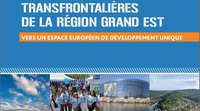
In December, the Grand Est Region published a brochure setting out its strategic orientations in the area of cross-border cooperation.

After two years of co-construction, the elected representatives of the Grand Est Region presented the major elements of the Region’s SRADDET at an event in Metz on 30 November 2018.
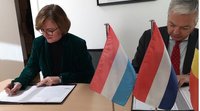
On 11 December 2018 in Brussels, a declaration of intent regarding the development of closer cooperation between France and the countries of the Benelux Union (Belgium, Luxembourg and the Netherlands) was signed.

On 7 December 2018 in Metz, the EURES Resource and Documentation Centre/Grand Est Cross-Border Workers hosted the annual seminar of EURES advisers in the Greater Region.
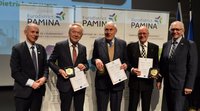
It was in the Alsatian town of Wissembourg that, on 12 December 2018, the 30th anniversary of the declaration of intent that established the PAMINA Eurodistrict was celebrated.

A seminar on the fair distribution of taxes and social security contributions in cross-border areas was held on 25 October in Geneva by the FEDRE Foundation and the Council of Europe’s Congress of Local and Regional Authorities.

The MOT, and the Jacques Delors Institute have in a 50-page document compiled a summary of the five cross-border citizen consultations that they held with local partners.

The French government has announced its support for the creation of a European territorial authority of Alsace, formed by the merger of the Bas-Rhin and Haut-Rhin Departments. It will be set up as of 1 January 2021. “We will support the elected representatives in their desire for Alsace. This will all be within the Grand Est Region – not a special status, but an authority with particular competences that derive notably from the cross-border setting and Alsace’s Rhineland identity,” stated the Minister for Territorial Cohesion, Jacqueline Gourault.

What European tools should be used to step up the energy transition? And what policies should be adopted to foster mobility among young people and learning the language of the neighbouring country’s? In Haguenau on 25 October, the citizens’ consultation organised with the MOT and the Jacques Delors Institute in the PAMINA Eurodistrict, with the support of Vincent Thiébaut, MP for the Bas-Rhin Department, brought together a hundred or so citizens to discuss the actions they would like Europe to implement in the cross-border setting.

The French prime minister has entrusted the Prefect of the Grand Est region with a mission relating to the institutional solutions available to give form to the “longing for Alsace”.

Launched in 2017 in the Pamina Eurodistrict, the educational game “Passe-partout – Weltenbummler” (“Globetrotter”) has successfully completed an initial pilot phase, and in September 2018 begins a new phase now covering the whole of the Upper Rhine region. A project to replicate!
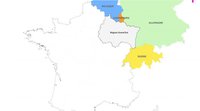
On 11 July 2018 in Châlons-en-Champagne in France, a meeting of the Grand Est Regional Administration Committee (CAR) was held: a veritable ‘board meeting’ of the State in the region, bringing together every two months the prefects of the region and the départements, and all of the decentralised services of the State.
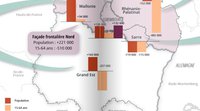
This new issue of "InfObservatoire" sets out the cross-border forecasts of the North Lorraine Urban Planning Agency (AGAPE): "With 150,000 French cross-border workers in Luxembourg in 15 years and huge movement of goods, isn't it time […] to make the cross-border dimension a priority issue?"

The executives of the Bas-Rhin and Haut-Rhin Departments have submitted to the Prefect of the Grand Est Region a proposal for an authority with special status, based on the views of 13,000 citizens.
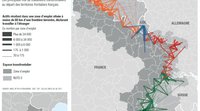
The General Commission for Territorial Equality (CGET) has just published its 2017 annual report. An extensive chapter looks at the dynamics of cross-border employment. Border issues are also discussed in other sections of the report.
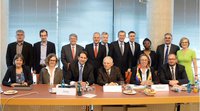
The report by the MP of the Bas-Rhin Department, Sylvain Waserman, was officially submitted to the French Prime Minister on 18 May. It sets out six proposals aimed at promoting a "renewal" of Franco-German cross-border cooperation, in the perspective of the forthcoming new Elysée Treaty.
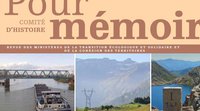
The General Council on the Environment and Sustainable Development, which is responsible for advising the government in the different fields of competence of the French Ministry for Ecological Transition, has devoted a special edition of its magazine "Pour mémoire" to cross-border issues in the areas of transport, the environment and energy.
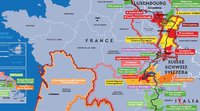
To mark its 20th anniversary, the MOT produced a map of European cross-border territories. Now, on the occasion of its 21st General Assembly, it is publishing – and has had printed in the form of a large poster – a map showing the cross-border territories along France's borders.

"They are French and live in France, but work on the other side of the border, in Italy, Switzerland or Germany. They are known as the 'transfrontaliers' [cross-border workers]… There are 500,000 of them – the highest number in Europe. But is there an entente cordiale between these French people and their neighbours?"
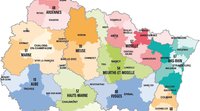
The new French regions have to draw up a "Schéma régional d’aménagement, de développement durable et d’égalité des territoires" (SRADDET – Regional Spatial Planning, Sustainable Development and Territorial Equality Plan). In order to set out a unifying political project for its territory, the Grand Est Region has chosen to place the cross-border dimension at the heart of its actions and to involve its cross-border partners in drawing it up.
A mission on deepening Franco-German cross-border cooperation, under the aegis of the Minister in charge of European Affairs, Nathalie Loiseau, has just been entrusted to the MP for the Bas-Rhin Department, Sylvain Waserman. The aim is to think about how renewing the Elysée Treaty would help to further develop Franco-German cross-border cooperation. A questionnaire for citizens is open until 30 April.

The MMUST project (Multimodal model and scenarios for cross-border mobility) has just been approved by the Greater Region Interreg VA programme. It is an ambitious project that aims to simulate cross-border movements between France, Luxembourg, Germany and Belgium.

"Beyond the speeches and symbols, what meaning can the concept of a cross-border region have? By defining the region as an identity-based, territorial and institutional construction that endures over time, this work identifies and interrogates the specificities of this process in the cross-border setting. The issues are explored using the emblematic example of the Greater Region, which launched a long-term strategy in 2008 involving Lorraine, Luxembourg, Rhineland-Palatinate, Saarland and Wallonia."
As part of the "UniGR - Centre for Border Studies" project, the six member universities (Kaiserslautern, Liège, Lorraine, Luxembourg, Saarland and Trier) of the University of the Greater Region (UniGR) are going to set up a "European centre of skills and resources in border studies" with international visibility.

In reponse to Emmanuel Macron and Angela Merkel’s desire to sign a new Elysée Treaty in 2018, and on the occasion of its 55th anniversary, the German Bundestag and the French National Assembly, meeting in a joint session on 22 January, adopted a resolution inviting the two governments to renew this treaty in order to “deepen the Franco-German partnership” and “launch a new dynamic”.